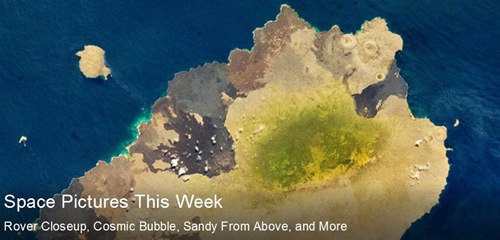
Space Pictures This Week: Rover Closeup, Sandy, and More
By National Geographic News, 6 November 2012.
By National Geographic News, 6 November 2012.
1. Rover Self-Portrait
Ready for its close-up but all alone on Mars, NASA's rover Curiosity created this self-portrait on Halloween. The image was stitched together from 55 high-resolution shots snapped by the Mars Hand Lens Imager (MAHLI), perched on the end of Curiosity's robotic arm.
The pictures were taken at "Rocknest," the location in Gale Crater where the mission first scoop-sampled Martian soil. Four scoop scars remain visible in the soil in front the rover, while the base of three-mile-high (five-kilometre-high) Mount Sharp rises to the right of Curiosity.
The self-portrait isn't just a way to show off Curiosity in action. The image allows scientists and engineers - looking for signs such as wheel wear and dust accumulation - to examine the condition of the rover and see how it has fared on Mars since its August 6 landing. (Related: Mars Rover Finds Ancient Streambed—Proof of Flowing Water.")
2. Cosmic Bubble
Like a set of cosmic lips, the pink Wolf-Rayet star HD 50896, 5,000 light-years from Earth, has blown an enormous space bubble (seen in a recent picture) that stretches a staggering 60 light-years across. This feature in the constellation Canis Major has been said to resembles a dog, with a protruding "ear" (upper left), and a "snout" below a pair of piercing "eyes" that includes the pink star (left) and a yellow counterpart.
In this composite image, X-ray data from XMM-Newton's EPIC camera appear as blue, while visible light from the Curtis-Schmidt telescope at the Cerro Tololo Inter-American Observatory is tinted red and green.
Bubbles like S 308 are somehow produced when hot, huge Wolf-Rayet stars - each about 40 times more massive than the sun - emit a shock wave of materials and strong stellar winds. In the future the bubble will pop, and the star will end its days with a supernova bang.
3. Sandy From the Sky
Superstorm Sandy's incredible size may be best appreciated from space. EUMETSAT's Metop-A satellite captured this shot of the storm pummelling the northeastern U.S. on October 30.
Sandy has killed more than a hundred people in the U.S., while wind and water destroyed entire neighbourhoods, cut power to some 8.5 million, and shuttered transportation systems and businesses. (See the top pictures of Sandy submitted by National Geographic readers.)
According to Accuweather statistics, the storm produced over a foot (30 centimetres) of rainfall in some locations and wind gusts that topped 90 miles (145 kilometres) an hour. Waves more than 30 feet (9.1 meters) tall were recorded at sea, while the storm surge at Kings Point, New York, reached 12.5 feet (3.8 meters) tall.
4. Ice on the Move
The ever changing nature of Antarctic sea ice is reflected in this recently released aerial image from NASA's Goddard Space Flight Centre.
Older ice appears bright white, thanks to snow cover, and bears many visible cracks, ridges, and rubble fields from the ice pack's perpetual motion. Open water appears dark black, covered by a thin coating of "grease ice" - thin, smooth sea ice that can resemble an oil slick. Thick stands of sea ice appears as grey slabs.
5. Star Cluster
With the Milky Way as a backdrop, the globular star cluster NGC 6362 shines on Halloween, as seen by the European Southern Observatory's La Silla Observatory in Chile.
Over ten billion years, tens of thousands of yellowish stars have burned through most of their life spans here, becoming red giants in the process.
But such clusters are also home to some stellar oddities - including blue stragglers. Though all of a cluster's stars formed at about the same time, the massive, fuel-consuming blue stars, which should have burned out long ago, continue to burn brightly - leaving their eternally youthful appearance a mystery. (See "'Blue Straggler' Stars Cannibalize to Stay Young.")
6. Volcano From Above
An International Space Station astronaut took this snapshot of Santiago in the Galápagos Islands when the station passed about 250 miles (400 kilometres) overhead on October 28. The bird's-eye view shows some of the geologic processes that created the islands over a volcanic mantle plume, or hot spot.
Santiago was formed by a shield volcano, whose low, flat summit ridge is seen below the green vegetation that covers the volcano's south-facing slopes (top left). Shield volcanoes produce extensive lava flows - here lava is visible as dark patches along some coastlines.
Tuff cones, seen as small circles at upper right, are created when hot lava turns the water below to steam, which then explodes up through the lava and scatters it.
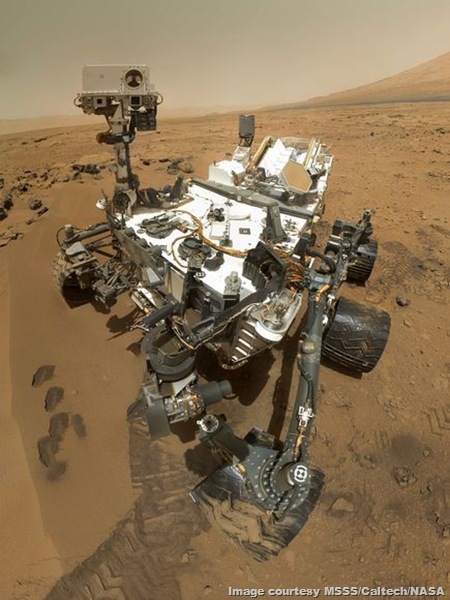


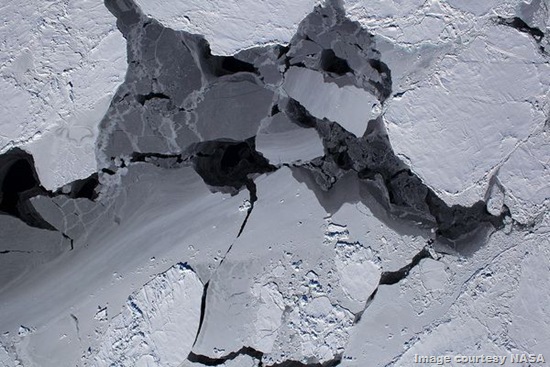
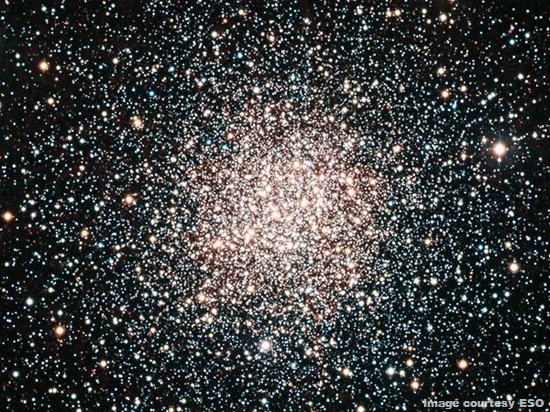
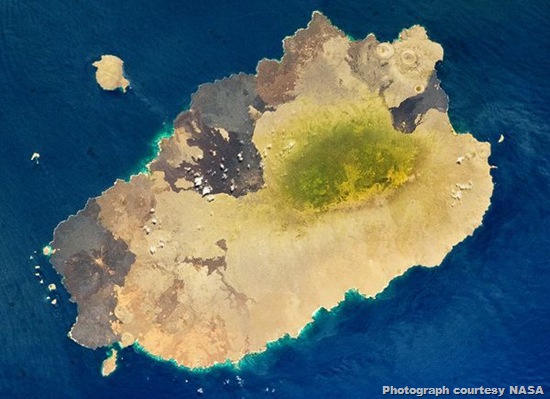
No comments:
Post a Comment
Please adhere to proper blog etiquette when posting your comments. This blog owner will exercise his absolution discretion in allowing or rejecting any comments that are deemed seditious, defamatory, libelous, racist, vulgar, insulting, and other remarks that exhibit similar characteristics. If you insist on using anonymous comments, please write your name or other IDs at the end of your message.